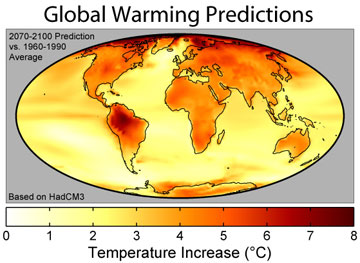Bill providing free GP care for children under six years now passed
Minister Lynch accepts amendment lifting ‘gagging clause’ on GPs
Minister of State Kathleen Lynch: “It is the first step along the way to ensuring that all our citizens have GP cover.
The Minister for Health has removed the “gagging clause” in the legislation providing free GP care for children under six. The Health (General Practitioner Service) Bill, passed all stages in the Dáil yesterday.
Leo Varadkar accepted an amendment removing the restriction on GPs speaking out, which was moved by Independent Prof John Crown in the Seanad recently and passed by the House. Prof Crown had argued that GPs would be prevented from expressing their views under the Bill’s terms.
Mr. Varadkar said that while it was always the intention to ensure freedom of expression for GPs, Prof Crown’s amendment copper fastened their freedom to voice their opinions or concerns about the health service.
“This Act is a significant step in the Government’s plan to provide universal health care,” he added, “starting with access to general practitioners without fees for children under six. This particular measure is the keystone of the Government’s policy in the area of primary care. We are shifting the focus of healthcare from hospitals to the community, and from treating illnesses to maintaining good health.”
Minister of State for Primary Care, Mental Health and Disability Kathleen Lynch said: “It is the first step along the way to ensuring that all our citizens have GP cover. It will be of enormous benefit to hard-pressed families with young children, helping them to overcome the obstacle of the financial burden of GP care.”
Over a thousand pubs have closed in Ireland since 2007


Over a thousand pubs have closed in Ireland since the economic crisis hit in 2007 leaving the industry in a state of despair, according to the Drinks Industry Group of Ireland (DIGI).
Speaking to the Joint Oireachtas Committee of Finance, DIGI said that a higher tax rate on alcohol, coupled with a poor economy, has left the industry in tatters.
“Excise damages our rural pubs and independent off-licences,” said Padraig Cribben, CEO of the Vintners Federation of Ireland.
“Since 2007 over 1,000 pubs throughout Ireland have been forced to close. The small pubs in rural communities cannot soak up excise increases across a wide product mix, like a supermarket can.”
In the case of small pub operators they have no recourse but to pass the costs on to consumers. Cribben added that Ireland’s high alcohol prices is also having a detrimental effect on tourism, as visitors flock to Northern Ireland, where hospitality is more affordable.
He said that Ireland is the most expensive country in Europe to buy alcohol, which should be a chief concerns to the country, “second only to the weather”.
“There has been rise in cross-border activity as a result of excise increases, causing pubs, independent off-licences and the exchequer to lose out,” Cribben said.
“On average, there is a 35% price difference between the Republic and Northern Ireland across all categories of alcohol, with Revenue Commissioner Figures showing that a bottle of Irish whiskey is €5.50 cheaper in the north.”
Job-seeker benefit payments of 14.7% goes to non-Irish nationals


NEW RESEARCH SHOWS 14% OF PEOPLE IN RECEIPT OF JOBSEEKERS BENEFIT ENTITLEMENTS ARE NON-IRISH NATIONALS.
That represents an under-representation of the group, compared to the proportion of the workforce they comprise.
A new report published by the ESRI looks at the proportion of non-nationals in receipt of key social security benefits during January of this year.
The research shows a mixed picture with regards to various welfare payments.
“There was no consistent pattern of over-representation among recipients of social welfare benefits,” said author of the report, Emma Quinn, who is also the National Programme Coordinator with the European Migration Network.
There was a distinction, she found, between the two types of unemployment payment – Jobseeker’s Benefit, paid to those covered by their past PRSI contributions, and Allowance, a lower rate paid to those who do not qualify for Benefit.
“I would consider benefits paid to people who have made PRSI contributions – contributory jobseekers’ benefit – non-Irish nationals are under-represented among all recipients of those types of benefits,” she said.
“[But] non-Irish nationals are over-represented among recipients of means-tested benefits – so those are benefits paid to people whose contribution has expired.”
Migrant workers make up 15.4% of the Irish workforce, but only 14.7% of Jobseekers Benefit recipients. The same group makes up 17.5% of Allowance recipients.
Common medications now switched to over the counter sale
THE REGULATOR SWITCHES DOZENS OF POPULAR PRODUCTS AWAY FROM PRESCRIPTION ONLY STATUS.
The Health Products Regulatory Authority today published a list of 12 active substances that are currently classified as prescription-only but are being switched to over-the-counter sale.
Dozens of commonly used medicines will be made available over the counter for the first time following a decision by the drugs regulator to remove their prescription-only classification.
The Health Products Regulatory Authority (formerly the Irish Medicines Board) today published a list of 12 active substances that are currently classified as prescription-only but are being switched to over-the-counter sale.
As a result, 34 medicines containing the substances singly or in combination will henceforth be available in pharmacies without prescription.
The list includes medicines used for the treatment of migraines, acid reflux symptoms, hay fever, cold sores, muscle pain and inflammation, fungal skin and nail infections and other inflammatory skin conditions.
Pharmaceutical companies that hold the marketing authorisation for the medicines will first have to apply to the authority to have their products reclassified before the change takes effect.
The decision was taken following examination by the authority of unmet needs in the availability of non-prescription medicines as well as recommendations by an independent consultative panel.
“The authority is pleased to bring this reclassification initiative forward with this initial list of products,” saidLorraine Nolan, director of human products authorisation. “This will see an increase in the range of medicines that can be made available to patients through pharmacies without prescription.
“Dependent on the nature, quality of applications and the relevant engagement process with marketing authorisation holders, further lists of appropriate substances may be considered in the future.”
Earlier this month, the authority switched the classification of a first nicotine replacement product from prescription-only to over-the-counter.
The medicines affected by the latest switch include diclofenac salts for muscle pain relief, penciclovir for cold sores, sumatriptan for migraine and mixtures of hydrocortisone with other drugs for skin problems.
Most of these drugs are better known under their commercial names.
Coral reefs face increased risk of fatal disease from dredging
WORLD-FIRST STUDY IN AUSTRALIA SHOWS IMPACT OF UNDERWATER DEVELOPMENT ON CORAL REEFS AND RAISES FURTHER CONCERNS ABOUT THE THREAT TO THE GREAT BARRIER REEF
Australian scientists have discovered that coral reefs face a serious threat of disease from underwater excavation activity, raising further concerns about the future of the Great Barrier Reef.
The world-first study examined the impact of 7 million cubic metres of dredging on 11 reefs off the coast of Western Australia and found that underwater excavation doubles the level of disease in nearby coral. It found that dredging forces corals to spend more energy cleaning the sediment from their surface and this can lead to chronic stress.
“Just like in any other organism, it seems that chronic stress can lead to increased levels of disease in corals,” said Joe Pollock, a marine scientist who led the study for the Australian Research Council’s Coral Reef Studies Centre of Excellence.
“Dredging is a pressing issue on many coral reefs throughout the world, including the Great Barrier Reef.”
The study, published in PloS ONE, comes amid growing concerns about the impact of a series of ports being built along the Great Barrier Reef, the world’s largest reef system.
The United Nations has expressed concern about the development activity along the 1,500-mile stretch of reefs and cays off Australia’s east coast and is considering downgrading the reef’s heritage status.
In January, Australia’s Prime Minister Tony Abbott approved a controversial port expansion which will allow three million cubic metres of dredged sediment to be disposed of in the Great Barrier Reef waters. A separate project to expand the port of Gladstone has involved significant dredging in the reef marine park and led to claims that it has affected water quality, sea grass cover and creatures such as turtles and dugongs.
Scientists and environmentalists have warned that the dredging will further endanger the reef, which they say is already facing widespread loss of coral cover due to coastal development, climate change, agricultural and industrial pollution, storms and the crown-of-thorns starfish.
The latest research examined large-scale dredging conducted to build a channel to transport liquefied gas from a resources project in the state of Western Australia and is believed to be the first study examining the link between dredging and coral disease.
“Corals require both light and food to survive,”
Mr Pollock said. “Unfortunately, dredging impacts corals reefs on two fronts, increased turbidity mean less light for photosynthesis, while increased levels of sediment falling onto the coral can interfere with their ability to feed.”
MEANWHILE:-
Climate changes happening more rapidly than at any point on record


A new look at the “vital signs” of Earth’s climate reveals a stark picture of declining health. As global temperatures rise, so do sea level and the amount of heat trapped in the ocean’s upper layers. Meanwhile, mountain glaciers and Arctic sea ice are melting away beneath an atmosphere where concentrations of three key planet-warming greenhouse gases continue to rise.
“Data show that the climate is changing more rapidly now than it has at any time in the historical record,” says Thomas Karl, director of the National Oceanic and Atmospheric Administration’s (NOAA’s) National Climatic Data Center in Asheville, North Carolina. “The numbers speak for themselves.”
The numbers speak pretty loudly, too. Depending on which data set scientists look at, 2013 falls somewhere between the second warmest and sixth warmest year since record keeping began in 1880. Global sea level reached a new record high last year—about 3.8 centimeters (1.5 inches) above the average measured by satellites between 1993 and 2010. Overall, sea level is rising about 3 millimeters (one-eighth of an inch) each year. And for the 23rd straight year, mountain glaciers on the whole lost more ice than they gained, says Jessica Blunden of ERT Inc., who works with Karl at the climate monitoring agency in Asheville. “Changes in these [glaciers] are visible and obvious signs of climate change,” Blunden says.
The new study, State of the Climate in 2013, was released online today in the Bulletin of the American Meteorological Society. The detailed, peer-reviewed analysis was based on data from environmental monitoring stations on land, sea, and ice and from sensors on satellites and planes. More than 400 scientists from 57 countries contributed to the report. (Previous State of the Climate reports, issued annually since 1991, can be found here.)
Increases in the levels of three key greenhouse gases are likely to be the root of recent warming, scientists suggest. The global average concentration of carbon dioxide reached more than 395 parts per million last year, a 2.8 ppm increase over 2012 levels, according to the new report. Levels of both methane and nitrous oxide (N2O), which on a pound-for-pound basis trap heat more effectively than CO2, rose last year about 0.3%.
(Nevertheless, about two-thirds of the atmosphere’s heat-trapping power comes from CO2, which is much more prevalent than the other two gases, the researchers report. Carbon dioxide levels are now in uncharted territory, the scientists say: Ice core records reveal that until the early 20th century, CO2 concentrations hadn’t risen above 300 ppm during the previous 800,000 years.)
From pole to pole, few parts of the globe are being spared warm-up. In the Eurasian Arctic, average temperatures last summer ranged between 1°C and 3°C warmer than the average temperatures there from 2007 through 2012. Fairbanks, Alaska, had a record number of days (36) in which the daily high temperature reached 27°C (80°F) or higher. All that warmth is seeping into the ground, too.
Permafrost temperatures measured 20 meters below ground at many sites in Alaska reached record highs last year, the scientists report. And 2013’s Arctic sea ice coverage in September, the month it usually falls to its lowest for the year, was 18% below the average coverage for that month from 1981 through 2010. Although not a record low amount, the scientists note that September sea ice coverage is declining almost 14% per decade since satellites started measuring sea ice extent in 1979.
At the other end of Earth, 2013’s average annual temperature at the South Pole was –47.4°C (–53.3°F): chilly, yes, but nevertheless a record high since scientists started collecting weather data there in 1957.
In between, China, Japan, and South Korea suffered their warmest summer on record, and Australia really suffered: With large swaths of the Land Down Under tallying summertime highs above 45°C (113°F), Australia had its warmest year since record keeping began in 1910.
The amount of heat stored in the upper 700 meters of the world’s oceans, which has increased substantially over the past 2 decades, also reached a record level last year. That increased heat content helps boost the strength of typhoons and hurricanes, Karl suggests. In the next couple of months, he notes, NOAA will release a report that discusses how climate change might be related to several episodes of extreme weather last year.





No comments:
Post a Comment